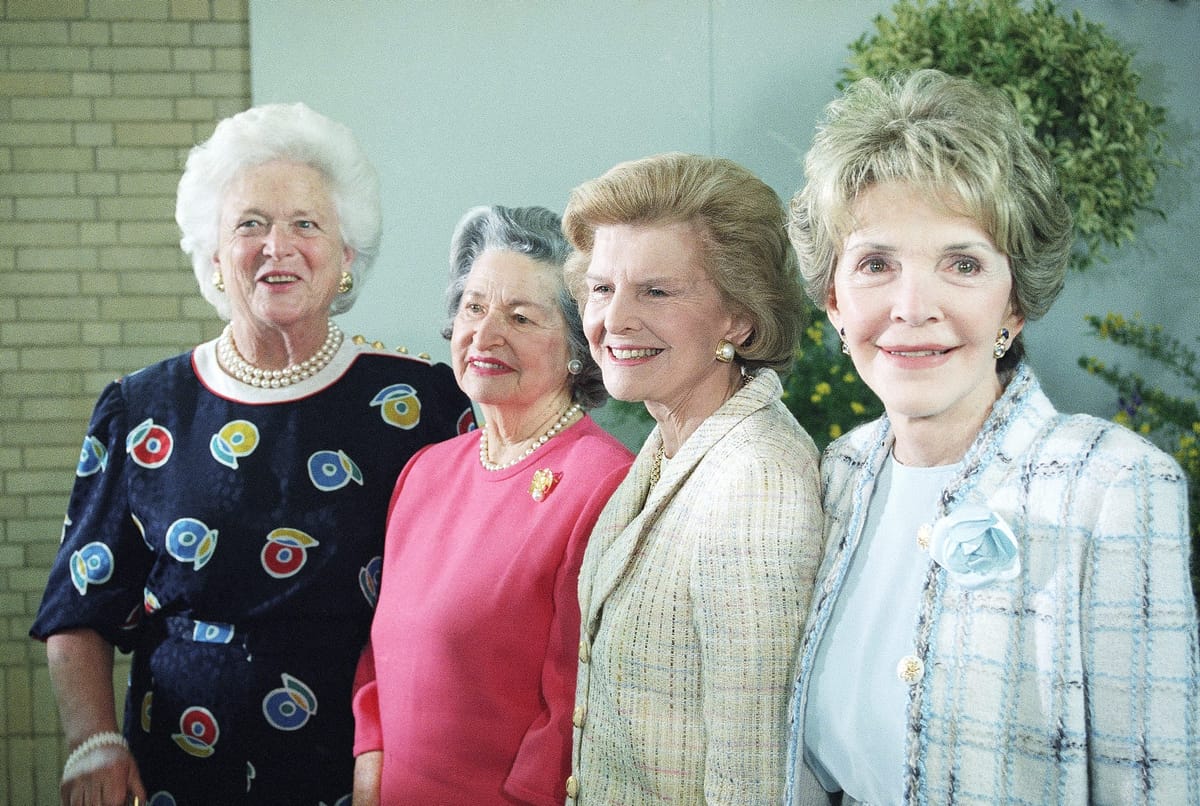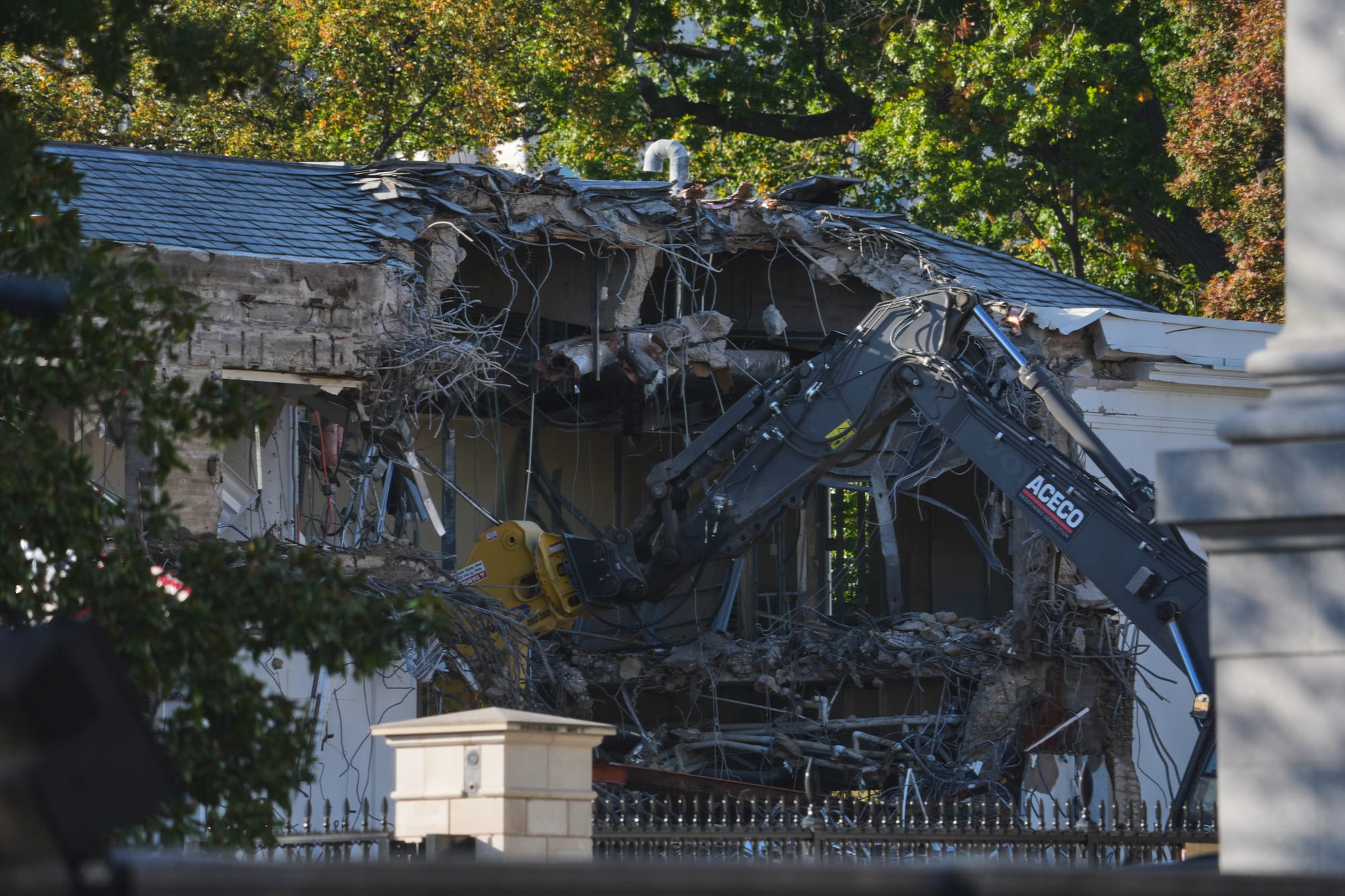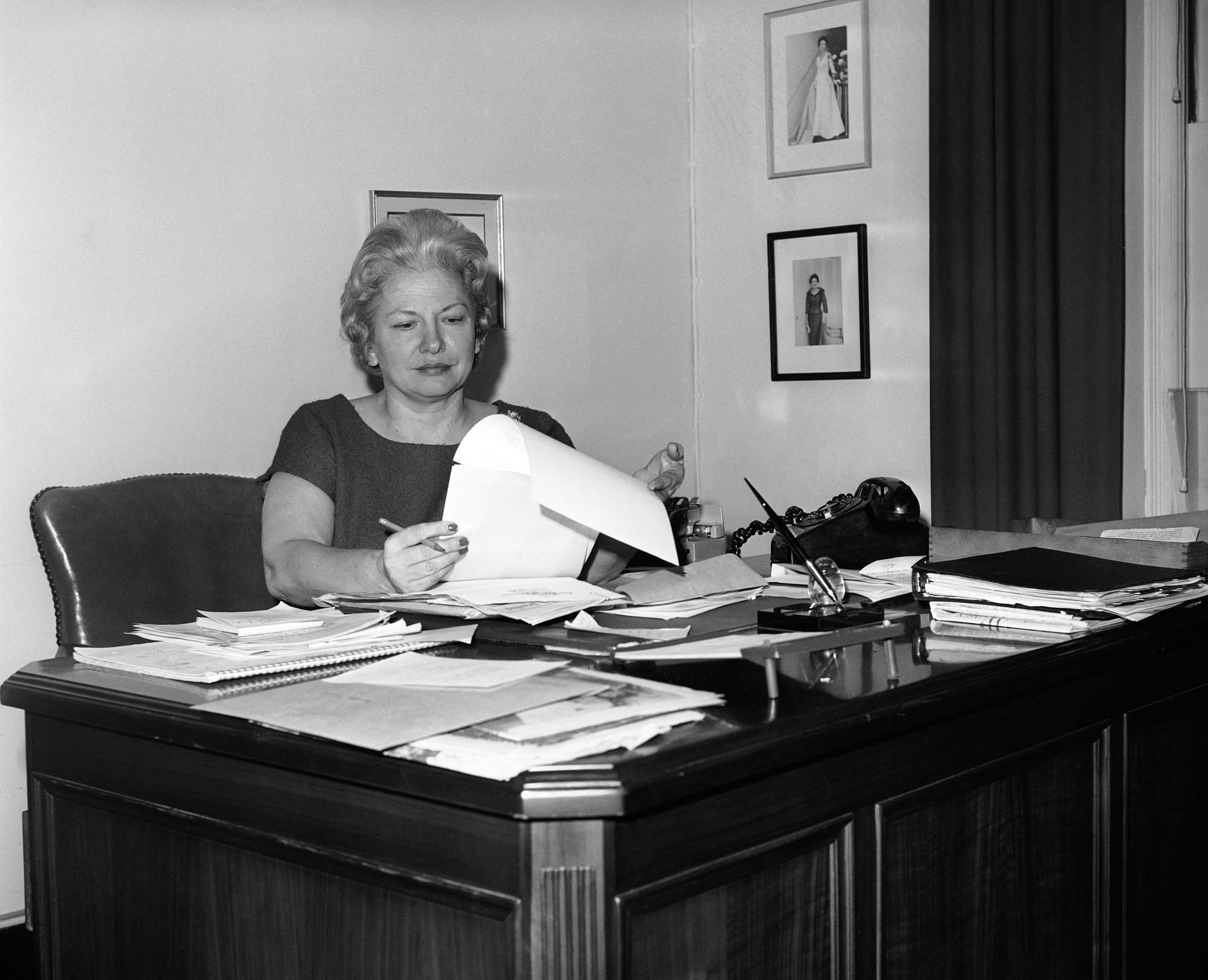Demolishing the East Wing to Make Room for a Ballroom Wipes Away the Work of First Ladies
President Trump's demolition of the White House's East Wing ignores that this "small building" has long been the symbolic heart of the nation.

This week’s photos of giant excavators ripping into the White House’s East Wing were a lot. We knew a so-called “big, beautiful” ballroom was on the way, but few seemed to connect the dots that this also necessitated the razing of the storied structure where the first lady’s staff has worked since the middle of the last century. First built in 1902 as an extension of the White House, and then expanded during World War II to house a bunker for the president, the East Wing has also been the traditional entrance for visitors and tour groups.
Historians criticized the audacity of the project—“like slashing a Rembrandt.” Others sought to prove President Trump is doing this without any of the required federal reviews. The Washington Post reported that the demolition crew’s website was replaced with a “this site is under construction” screen on Tuesday, following coast-to-coast uproar. Oh, the irony.


Mike Johnson, the Speaker of the House, tried to defend the work, calling it the “greatest improvement to the White House in the history of the building;” while Sen. Chris Murphy of Connecticut told MSNBC, “There’s a lot of history that has taken place in the East Wing, and it was just destroyed without any conversation in the American public, without any consent of Congress.” He added, “It was absolutely illegal.”
“It was never thought of as being much,” Trump said on Wednesday. “It was a very small building.”
A symbolic heart
The East Wing has long been the symbolic heart of the nation, where the president’s spouse and her staff worked on the types of “soft diplomacy” that’s carried out at home and abroad. Here, Lady Bird Johnson launched her highway beautification program and Michelle Obama worked to fight childhood obesity and help military families. It was from the East Wing that Pat Nixon helped to open China and Laura Bush directed a global fight against HIV and AIDS.

As with all White House spaces, it is—or was—fairly compact. A layout dating back to Betty Ford’s era shows a workspace for around 25 people. Michelle Obama had a staff about that size, while Melania Trump, in Trump’s first term, had a staff that was slightly smaller. (It’s unclear how many people Melania has working for her today. She spends most of her time in New York and Florida, anyway.)
For the first lady, now what?
For the First Lady and her team, and for future first spouses, now what?
The short answer: unclear. Government officials have spoken generally about relocating East Wing staff, including the White House Social Secretary and the White House Military Office, to the White House itself or across the street to the cramped Eisenhower Executive Office Building.
Historically, first couples have worked very much in tandem, either as direct collaborators on governing, as with the Clintons, or more as close supporters, as with both sets of Bushes. The first spouse has historically been the president’s closest advisor. To put the spouse physically out of reach feels like intentional exile, and maybe that’s the point. After all, the current first spouse has been markedly absent this term.


All of this comes on top of the administration's efforts to reduce the visibility of women across the board: from purging government websites of information about women; to tacitly forcing grant applicants to remove references to “women” in funding proposals; to the firing of the military’s top female brass and the Secretary of Defense’s efforts to exclude women from combat roles.
The shiny marble ballroom is now expected to cost $300 million (up from $200 million just weeks ago)—an oblivious Marie Antoinette turn at a moment when 42 million Americans are on the verge of losing food stamps due to the government shutdown. At 90,000 square feet, the building (which is being designed by a man known for cathedrals in the South) will overwhelm the White House, and be more than double the size of the impossibly overcrowded West Wing.
And what will the building be used for, other than social affairs? Who’s to say. Most likely, it will stand empty a lot of the time, a lifeless shell in the place of a structure where real work got done and the nation’s heart once lay.
More space for…?
President Trump isn’t wrong to say the White House needs more space for social occasions. The East Room (inside the White House proper) can only seat 200 people, and tents are often raised on the South Lawn for larger gatherings. But the choice he’s made seems less about taking an honest swing at that problem and more about serving his own purposes. He’s said the new building won’t cost the taxpayers anything because it will be funded by private corporate donations (which has some people raising flags about corruption). Speaking to Republican Senators on Tuesday, Trump pointed to the sounds coming from the demolition and said, “That’s music to my ears…. When I hear that sound, it reminds me of money.”
Truly, it would have been one thing if modifications had been made through proper review and approval processes. No one expects federal buildings to remain “as is” for ever. But the wholesale wreckage of a historic building—and the important work done within it—is symbolic. As the former first lady and 2016 presidential candidate Hillary Clinton posted on X, “It’s not his house. It’s your house.” Indeed, John Quincy Adams nicknamed it “The People’s House,” a moniker which has frequently been used since then. “And,” Clinton continued, “he’s destroying it."









